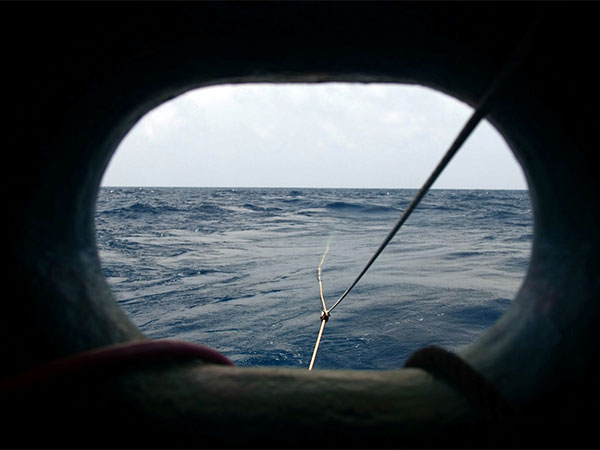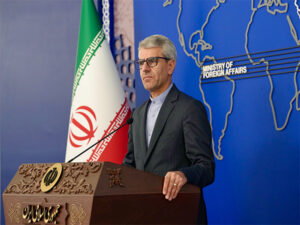Japan, US, Australia collaborate on USD 95 mn undersea cable project to strengthen Indo-Pacific networks
Tokyo [Japan], June 20 (ANI): In a move to counter China’s expanding influence in the Indo-Pacific region, Japan has joined forces with the United States and Australia to sign an agreement on a USD 95 million undersea cable project.

The project aims to connect the East Micronesia island nations of Kosrae in the Federated States of Micronesia, Tarawa in Kiribati, and Nauru to the existing cable landing point in Pohnpei, Micronesia. The development comes as the Quad alliance of Japan, the United States, Australia, and India underscores the significance of undersea cables as vital components of communication infrastructure and foundations for internet connectivity.
The undersea cable project, spanning approximately 2,250 kilometers (1,400 miles), will provide improved networks and connectivity in the Pacific region. By linking the three East Micronesia island nations to the existing cable landing point, the project aims to ensure high-speed, high- quality, and secure communications for residents, businesses, and governments in the area.
The collaboration between Japan, the United States, and Australia reflects their shared concerns over China’s growing influence in the region. By strengthening digital connectivity, these nations seek to counter Beijing’s efforts to expand its security and economic presence in the Indo-Pacific.
The Quad leaders recently emphasized the significance of undersea cables, recognizing them as critical infrastructure for robust internet connectivity. This joint initiative showcases the commitment of the Quad countries to maintain secure and resilient digital networks.
The agreement involves the final survey, design, and manufacturing of the undersea cable, which is expected to be completed by 2025. The cable, with a width similar to that of a garden hose, will provide connectivity to over 1,00,000 people residing in the three Pacific countries. NEC Corp., awarded the contract through a competitive tender process, will oversee the project’s implementation. The company has stated that the cable will significantly enhance digital connectivity, contributing to economic development in the region.
The initiative aligns with Japan’s broader efforts to deepen its engagement with the Pacific Islands and strengthen regional partnerships. By collaborating with the United States and Australia, Japan aims to promote shared values, foster stability, and support the sustainable development of the Pacific Island nations.
The undersea cable project also holds strategic significance beyond improving connectivity. By countering China’s growing influence, the participating nations seek to maintain a free and open Indo-Pacific region. By providing an alternative to Chinese-backed initiatives, this project offers increased choice and diversification in the region’s digital infrastructure.
Additionally, the collaboration on the undersea cable project strengthens the bonds between the Quad countries. By working together to develop critical infrastructure, Japan, the United States, Australia, and India showcase their commitment to regional security, stability, and economic prosperity.
However, the joint undersea cable project also carries a geopolitical undertone, with the participating nations aiming to counter China’s expanding influence in the Indo-Pacific region. China has been actively pursuing its Belt and Road Initiative (BRI), which includes investments in infrastructure projects across Asia and the Pacific. These investments often come with strings attached and have raised concerns about China’s intentions and potential influence over recipient countries.
By collaborating on the undersea cable project, Japan, the United States, and Australia are providing an alternative to Chinese-backed initiatives and asserting their presence in the region. The project offers increased choice and diversification, ensuring that countries in the Pacific have options for connectivity that are not solely dependent on Chinese investments.
China’s expanding presence and influence in the region have raised concerns about its intentions and the potential risks associated with its investments. There have been instances where Chinese-funded projects have led to unsustainable debt burdens for recipient countries, as well as concerns over the security implications of China gaining control over critical infrastructure.
The joint undersea cable project serves as a demonstration of the participating nations’ commitment to maintaining a free and open Indo-Pacific region. By providing a secure and resilient digital connectivity alternative, they are bolstering the region’s independence and reducing the risk of overreliance on China.
In conclusion, the USD 95 million undersea cable project signed by Japan, the United States, and Australia underscores their joint commitment to improving networks and connectivity in the Indo-Pacific region. Beyond its technical significance, the project also carries geopolitical implications, as the participating nations seek to counter China’s expanding influence and provide an alternative to Chinese-backed initiatives. By prioritizing secure and resilient connectivity, they aim to promote regional stability, economic growth, and the independence of Pacific Island nations.






